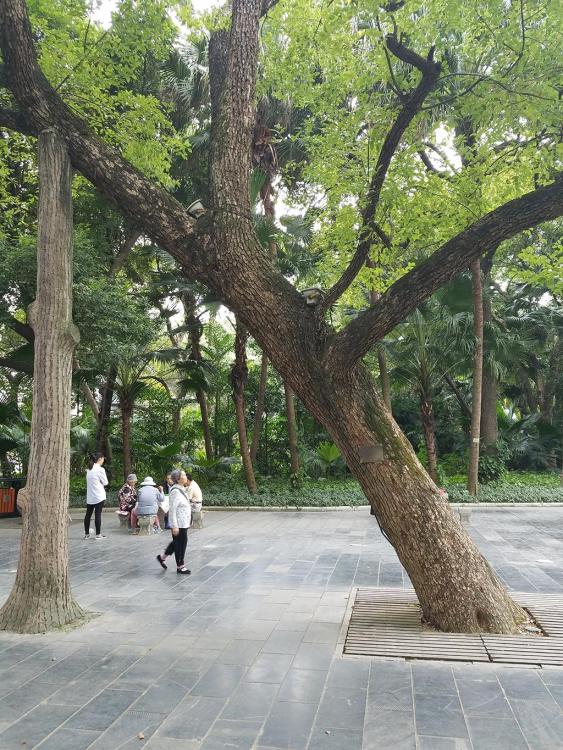3. 桂皮 (guì pí) - Cassia Bark - Cinnamomum cassia
Another local is cassia bark 肉桂 (ròu guì) or 桂皮 (guì pí), Cinnamomum cassia, which is native to Guangxi, neighbouring Yunnan province and equally neighbouring northern Vietnam.
A few days ago I accidentally found myself watching a YouTube video in which a one-time winner of Masterchef, Australia was opining about various ingredients used in a Chinese dish. I was spitting at my computer screen as he came out with utter, ignorant drivel. Among the tirade of nonsense emanating from his mouth was the preposterous claim that cinnamon is the inner bark of the tree while cassia is the outer bark. Pillock!
Cinnamomum cassia tree in my local park. No, they don't all lean like that!
Cinnamon and cassia are related but different trees. (True cinnamon is from Cinnamomum verum or Cinnamomum zeylanicum, both native to the Indian subcontinent.) Both edible spices are from the dried inner bark of their respective trees. I wouldn’t trust that ‘master’ to boil me an egg!
It is true, however to say, that most cinnamon sold in North America is actually cassia. That troubles me. They do taste a lot different, with true cinnamon being considerably less pungent and more delicate. Cassia can be bitter if too much is used. Go sparingly. Cassia is generally better suited to savoury dishes, whereas cinnamon more to sweet dishes.
Cassia is yet another ingredient in five-spice powder and the quills or pieces there of are also added to hot pots, braises and stewed dishes. The leaves, flower buds and seeds are all used, too. The leaves are used like bay leaves.
Please note that what is often sold as 'cassia seed', isn't cassia at all, but a completely different plant.





